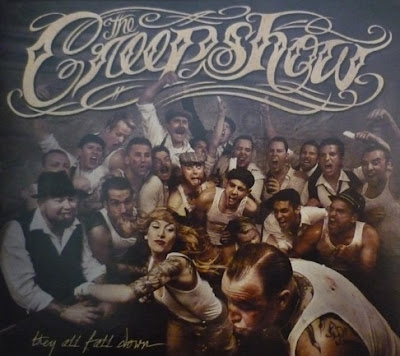Season’s greetings, gentle
readers! Santa was very good to me, and I have a $50 gift certificate to my
local record store burning a hole in my pocket. But before all that happens, let’s
review something already in the collection.
Disc 1086 is…Palace of Gold
Artist: Blue
Rodeo
Year of Release: 2002
What’s up with the Cover? It’s a collage full of various
pretty things (flowers, guitars, colorful frogs) jumbled together to create a
hill with a palace on top of it. I note with some disappointment this palace is
not gold, although it does have a
golden sun burning behind it. Maybe the palace got its nickname due to the
memorable sunsets it enjoys.
As for
the collage, while I like the individual images in isolation, they are a lot
less appealing jumbled together.
How I Came To Know It: Sheila got me into Blue Rodeo
years ago and I probably bought her this album when it came out.
How It Stacks Up: We have 13 Blue Rodeo albums. Of those 13,
“Palace of Gold” is in a dead heat with “Lost Together” at 6 or 7. Which is
better (or more deserving of a four star rating) depends on how I am feeling at
any particular moment. Today the Christmas spirit is making me feel generous,
so I’m going to bump “Palace of Gold” ahead of “Lost Together” and into sixth.
Ratings: 4 stars
Before writing this review I listened to this album
in perfect Canadian conditions: waiting for a bus in the freezing cold. The
thoughtful artistic expression of principal songwriters Jim Cuddy and Greg
Keelor kept my heart warm despite the bite of winter, and the padded headphones
did the same for my ears.
For an album that was supposed to be a departure
from Blue Rodeo’s signature sound, the opening track off “Palace of Gold,” with
its blasts of organ layered over country/rock melodies sounds an awful lot like
what Blue Rodeo always sounds like.
Sure the arrangements are a bit more lush, and Cuddy
and Keelor have added some horn here and there, but this is still Blue Rodeo at
its core. This is a good thing because horns or no horns, “Palace of Gold” has
some of Blue Rodeo’s finest songwriting. While I would have liked some of these
songs stripped down a bit more so I could appreciate that songwriting, there
were other times that I welcomed the orchestral swell of it all.
The horns make their first significant appearance at
the end of track three, a Keelor number called “Homeward Bound Angel” and sound…OK. It felt a bit like they were
trying to channel the Rolling Stones and they kept the song going about a
minute longer than it needed to be. Then again, if you get mad at Keelor for stretching
an otherwise good song then you’re going to be mad a lot. As an experienced Blue
Rodeo fan, I knew enough to just shrug and enjoy the ride.
The album has two masterpieces, one by each band
leader. Cuddy’s entry is “Bulletproof,”
a plea in the midst of a fight with your loved one to stop the barbed retorts
flying around the room before someone gets hurt. This song has an oddly placed flamenco guitar solo in the middle of it, but
it manages to work, chiefly because the cry of Cuddy’s voice as he seeks an
emotional armistice is so powerful and honest.
One again I found on balance I was enjoying Cuddy’s folk-country
style slightly more appealing than Keelor’s stoner rock, but both had their
moments. The second masterpiece belongs to Keelor, in fact. “Stage Door” is a song about the little
things that give someone comfort in times of uncertainty. For Keelor, the list
is simple:
“Ain’t no mystery,
what I need
Is understanding
and your sweet sympathy
A steel string
guitar and a little weed
And someone to keep
me company
Someone to keep me
company.”
This song has a flourish of violin that really adds
to the swell of it all, and takes Keelor’s stoner sounds and makes them a bit
more orchestral. I liked the effect, and as with Cuddy on “Bulletproof,” the emotional honesty in Keelor’s delivery gives
additional gravitas to what is already a pretty emotionally charged song.
The album edges into being too long at 14 songs and
55 minutes, but there is enough quality sprinkled through the experience that
it was easy to forgive. Over the years we’ve played this record a lot (it is
one of Sheila’s favourites) and it is still fresh and enjoyable. It may have a few
more bells and whistles (and trumpets) than usual but at its core it is just
another great Blue Rodeo album and well worth your time.
Best
tracks: Holding
On, Homeward Bound Angel, Bulletproof, Love Never Lies, Stage Door













